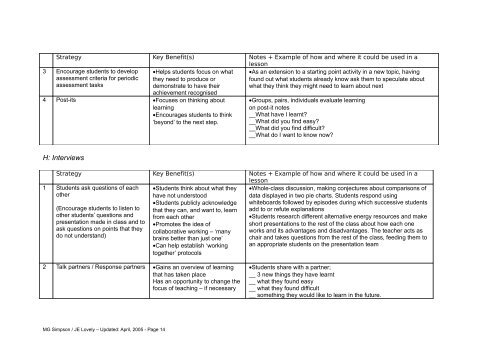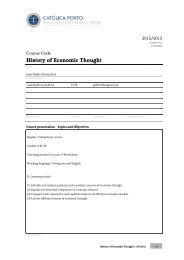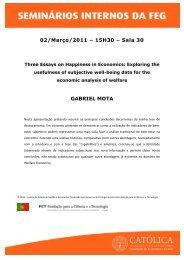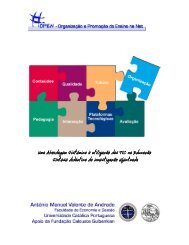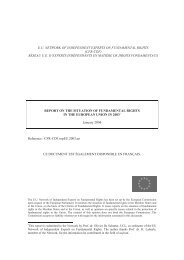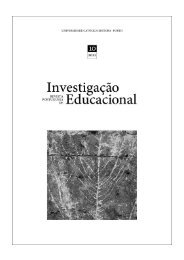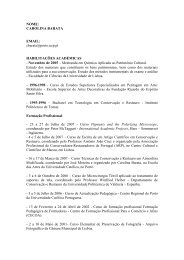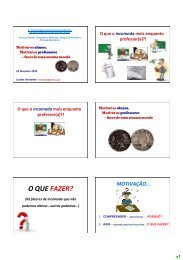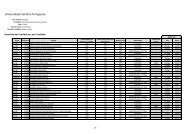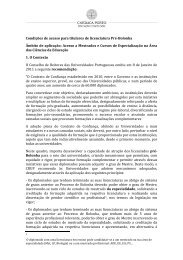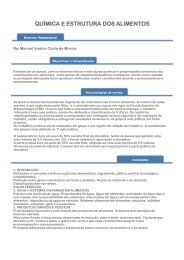Peer and Self evaluation strategies – a start
Peer and Self evaluation strategies – a start
Peer and Self evaluation strategies – a start
Create successful ePaper yourself
Turn your PDF publications into a flip-book with our unique Google optimized e-Paper software.
Strategy Key Benefit(s) Notes + Example of how <strong>and</strong> where it could be used in a<br />
lesson<br />
3 Encourage students to develop<br />
assessment criteria for periodic<br />
assessment tasks<br />
•Helps students focus on what<br />
they need to produce or<br />
demonstrate to have their<br />
•As an extension to a <strong>start</strong>ing point activity in a new topic, having<br />
found out what students already know ask them to speculate about<br />
what they think they might need to learn about next<br />
achievement recognised<br />
4 Post-its •Focuses on thinking about<br />
learning<br />
•Encourages students to think<br />
‘beyond’ to the next step.<br />
•Groups, pairs, individuals evaluate learning<br />
on post-it notes<br />
__What have I learnt?<br />
__What did you find easy?<br />
__What did you find difficult?<br />
__What do I want to know now?<br />
H: Interviews<br />
Strategy Key Benefit(s) Notes + Example of how <strong>and</strong> where it could be used in a<br />
lesson<br />
1 Students ask questions of each<br />
other<br />
(Encourage students to listen to<br />
other students’ questions <strong>and</strong><br />
presentation made in class <strong>and</strong> to<br />
ask questions on points that they<br />
do not underst<strong>and</strong>)<br />
•Students think about what they<br />
have not understood<br />
•Students publicly acknowledge<br />
that they can, <strong>and</strong> want to, learn<br />
from each other<br />
•Promotes the idea of<br />
collaborative working <strong>–</strong> ‘many<br />
brains better than just one’<br />
•Can help establish ‘working<br />
together’ protocols<br />
•Whole-class discussion, making conjectures about comparisons of<br />
data displayed in two pie charts. Students respond using<br />
whiteboards followed by episodes during which successive students<br />
add to or refute explanations<br />
•Students research different alternative energy resources <strong>and</strong> make<br />
short presentations to the rest of the class about how each one<br />
works <strong>and</strong> its advantages <strong>and</strong> disadvantages. The teacher acts as<br />
chair <strong>and</strong> takes questions from the rest of the class, feeding them to<br />
an appropriate students on the presentation team<br />
2 Talk partners / Response partners •Gains an overview of learning<br />
that has taken place<br />
Has an opportunity to change the<br />
focus of teaching <strong>–</strong> if necessary<br />
•Students share with a partner;<br />
__ 3 new things they have learnt<br />
__ what they found easy<br />
__ what they found difficult<br />
__ something they would like to learn in the future.<br />
MG Simpson / JE Lovely <strong>–</strong> Updated: April, 2005 - Page 14


